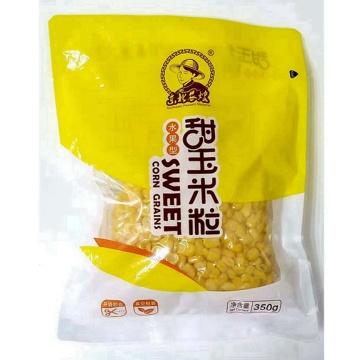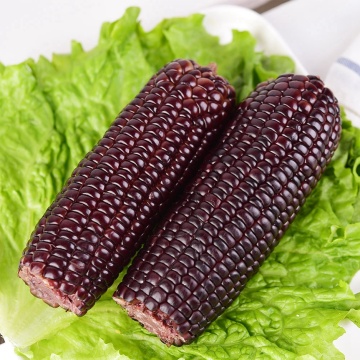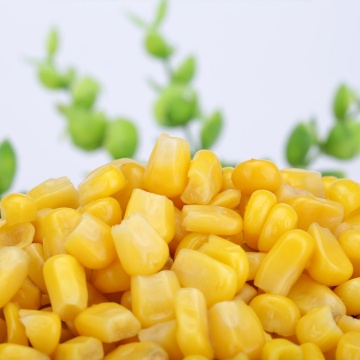Application and Development of "Vacuum Technology" in Food Industry (1)
![]() May 27, 2021
May 27, 2021
1 Overview
With the development of science and technology, vacuum technology is increasingly used in the food industry. Vacuum technology is known as the sunrise industry in the 21st century. As a comprehensive cross discipline, it has a wide range of applications in transportation, environmental protection, drying, storage, and processing, and various new processes and methods closely related to vacuum technology. New technologies and new equipment have shown their unique advantages and characteristics.
The term "vacuum" was translated from the Latin vacuo. Its meaning is nothingness. In fact, vacuum should be understood as a space where the gas is relatively thin. In the specified space, gas states below one atmosphere are collectively referred to as vacuum. The degree of gas thinness in a vacuum is called the degree of vacuum, which is usually expressed as a pressure value.
According to the national standard GB3163 formulated by China, the vacuum area is roughly divided as follows:
Low vacuum area 105~102Pa (760~1torr)
Medium to low vacuum area 102~10-1Pa (1~10-3torr)
High vacuum area 10-1~10-5Pa (10-3~10-7torr)
Ultra-high vacuum area <10-5Pa (<10-7torr)
At present, the use of vacuum technology in the grain industry is mainly concentrated in the middle and low vacuum areas. It is reflected in a series of production activities such as grain clearance, drying, storage, transportation, and processing after grain production, which will help increase the effective output of grain, improve or protect the quality of grain, and improve the system's treatment efficiency.
2, vacuum handle (vacuumhandling)
Use the force generated by the pressure difference between vacuum and atmospheric space to do work. Due to the fact that the mechanical energy has a uniform pressure everywhere, these vacuum equipments are used in the food, flour, and feed industries. Utilize the vacuum pump installed in the end of the conveying system to suck the air in the system so that a sub-atmospheric negative pressure air flow is formed in the conveying pipe. The material is sucked together with the atmosphere from the starting point into the pipe, and the air is sent to the end separator. The particles of the material are separated from the airflow by gravity or centrifugal force. After the dust is removed by the vacuum pump or centrifugal fan, the dust is discharged into the atmosphere.
Vacuum conveying equipment is mainly used for grain handling in the grain industry. It can be placed in ports, docks, silos, or bulk material storage sites. The materials are pumped up and sent to receiving points such as silos, for ships that ship bulk materials. , Vehicles, etc. do not require special modifications, is the ideal equipment for bulk materials such as grain and other granular systems. It can realize long-distance vertical transportation and is easy to operate. The whole machine has reliable performance, dust-free operation, little loss of loading and unloading conveying materials, and high work efficiency. The utility model has the advantages of small volume, light weight, simple and compact structure, easy installation, low noise, no vibration, and convenient maintenance. The use of negative pressure conveying methods for handling and handling can improve the working environment of various food facilities, reduce the wear and tear of equipment due to dust, protect operators from dust damage to the body, prevent the occurrence of dust explosion, and reduce the environmental impact. Dust pollution. Has great social and environmental benefits.
As early as 1958, Shanghai Port and Changsha and other places began to test the use of vacuum grain suction machines to ship food from ships. Taking the food industry as an example, there are more than 1,000 flour mills in China that use vacuum to deliver the vacuum transport capacity used by the port to reach a capacity of 200 tons per hour. As a new transportation technology, vacuum transportation is expected to be further developed in its adaptable field.
Vacuum transport has the following characteristics: 1 The equipment structure is simple, manufacturing, processing, installation are more convenient, less control costs, short construction time. The main components of the vacuum conveying system are the welded structures of the steel plates. They consist of tubes and can-shaped components. Relative movements and maintenance operations among the components are relatively easy. If some control equipment is added, it is easy to realize automatic operation. . 2 high transmission efficiency, equipment, no return transportation. All other means of transport have the drawbacks of return by air in the means of transport. The transport medium in vacuum is air, which only needs to be discharged into the atmosphere at the terminal. During the transport process, the feed port can be continuously fed to achieve continuous transport. 3 The labor and sanitation conditions are good. When the vacuum is conveyed, the material will run in the pipe. The inside of the pipe will be under negative pressure. The dust will not leak out and the material will not scatter and pollute the environment. In the transportation process, intermediate processing such as sorting and drying can also be performed. If the material is conveyed under negative pressure, because the moisture evaporates easily under the negative pressure, even if no other drying means is used, the material with higher moisture will get a certain drying effect during the conveying process, and the weight of the material particles will be different. Well-designed material outlets can sort materials. 4 In addition, the vacuum-transporting conveying pipe facilitates the setting of the pipe network according to local conditions. The layout is simple and flexible, and the site area can be fully utilized to easily adapt to the working environment.
The main problem of vacuum transportation is that the power consumption is large and the transmission distance is limited. For the volume, shape and physical properties of the material to be sucked, there is a certain requirement. It is not suitable for conveying cohesive and adhesive materials. Avoid charging charged powders. The entire system must have good airtightness, and it is more difficult to completely accomplish this. Whether it is appropriate to adopt vacuum transportation, it is necessary to consider the economic benefits.
3, vacuum cleaning (vacuumcleaning)
In China's grain import and export warehouses, warehouse operations, and production and processing processes, especially during grain transit, the resulting dust is large and the operating environment is harsh. Even more serious is that a large amount of dust is likely to cause powder explosion and give people Life and national property security pose serious hidden dangers. In the modern production field of the grain industry, the demand for dust is getting higher and higher. The cleanliness of the production environment is not only a necessary prerequisite for ensuring the high quality of certain products, but also important for improving the production environment, protecting the health of individuals and avoiding secondary pollution.
The use of a vacuum dust-removal method is environmentally friendly. It not only improves the working environment of various food facilities, protects the health of individuals, prevents the dust from flying out and dust explosions, but also reduces the dust pollution to the surrounding environment. Vacuum dedusting has the characteristics of flexible arrangement, convenient use, high collection rate, effective collection range, and strong operational reliability. It can reduce secondary pollution and greatly reduce the labor intensity and dust damage to the body.
With the development of science and technology, vacuum technology is increasingly used in the food industry. Vacuum technology is known as the sunrise industry in the 21st century. As a comprehensive cross discipline, it has a wide range of applications in transportation, environmental protection, drying, storage, and processing, and various new processes and methods closely related to vacuum technology. New technologies and new equipment have shown their unique advantages and characteristics.
The term "vacuum" was translated from the Latin vacuo. Its meaning is nothingness. In fact, vacuum should be understood as a space where the gas is relatively thin. In the specified space, gas states below one atmosphere are collectively referred to as vacuum. The degree of gas thinness in a vacuum is called the degree of vacuum, which is usually expressed as a pressure value.
According to the national standard GB3163 formulated by China, the vacuum area is roughly divided as follows:
Low vacuum area 105~102Pa (760~1torr)
Medium to low vacuum area 102~10-1Pa (1~10-3torr)
High vacuum area 10-1~10-5Pa (10-3~10-7torr)
Ultra-high vacuum area <10-5Pa (<10-7torr)
At present, the use of vacuum technology in the grain industry is mainly concentrated in the middle and low vacuum areas. It is reflected in a series of production activities such as grain clearance, drying, storage, transportation, and processing after grain production, which will help increase the effective output of grain, improve or protect the quality of grain, and improve the system's treatment efficiency.
2, vacuum handle (vacuumhandling)
Use the force generated by the pressure difference between vacuum and atmospheric space to do work. Due to the fact that the mechanical energy has a uniform pressure everywhere, these vacuum equipments are used in the food, flour, and feed industries. Utilize the vacuum pump installed in the end of the conveying system to suck the air in the system so that a sub-atmospheric negative pressure air flow is formed in the conveying pipe. The material is sucked together with the atmosphere from the starting point into the pipe, and the air is sent to the end separator. The particles of the material are separated from the airflow by gravity or centrifugal force. After the dust is removed by the vacuum pump or centrifugal fan, the dust is discharged into the atmosphere.
Vacuum conveying equipment is mainly used for grain handling in the grain industry. It can be placed in ports, docks, silos, or bulk material storage sites. The materials are pumped up and sent to receiving points such as silos, for ships that ship bulk materials. , Vehicles, etc. do not require special modifications, is the ideal equipment for bulk materials such as grain and other granular systems. It can realize long-distance vertical transportation and is easy to operate. The whole machine has reliable performance, dust-free operation, little loss of loading and unloading conveying materials, and high work efficiency. The utility model has the advantages of small volume, light weight, simple and compact structure, easy installation, low noise, no vibration, and convenient maintenance. The use of negative pressure conveying methods for handling and handling can improve the working environment of various food facilities, reduce the wear and tear of equipment due to dust, protect operators from dust damage to the body, prevent the occurrence of dust explosion, and reduce the environmental impact. Dust pollution. Has great social and environmental benefits.
As early as 1958, Shanghai Port and Changsha and other places began to test the use of vacuum grain suction machines to ship food from ships. Taking the food industry as an example, there are more than 1,000 flour mills in China that use vacuum to deliver the vacuum transport capacity used by the port to reach a capacity of 200 tons per hour. As a new transportation technology, vacuum transportation is expected to be further developed in its adaptable field.
Vacuum transport has the following characteristics: 1 The equipment structure is simple, manufacturing, processing, installation are more convenient, less control costs, short construction time. The main components of the vacuum conveying system are the welded structures of the steel plates. They consist of tubes and can-shaped components. Relative movements and maintenance operations among the components are relatively easy. If some control equipment is added, it is easy to realize automatic operation. . 2 high transmission efficiency, equipment, no return transportation. All other means of transport have the drawbacks of return by air in the means of transport. The transport medium in vacuum is air, which only needs to be discharged into the atmosphere at the terminal. During the transport process, the feed port can be continuously fed to achieve continuous transport. 3 The labor and sanitation conditions are good. When the vacuum is conveyed, the material will run in the pipe. The inside of the pipe will be under negative pressure. The dust will not leak out and the material will not scatter and pollute the environment. In the transportation process, intermediate processing such as sorting and drying can also be performed. If the material is conveyed under negative pressure, because the moisture evaporates easily under the negative pressure, even if no other drying means is used, the material with higher moisture will get a certain drying effect during the conveying process, and the weight of the material particles will be different. Well-designed material outlets can sort materials. 4 In addition, the vacuum-transporting conveying pipe facilitates the setting of the pipe network according to local conditions. The layout is simple and flexible, and the site area can be fully utilized to easily adapt to the working environment.
The main problem of vacuum transportation is that the power consumption is large and the transmission distance is limited. For the volume, shape and physical properties of the material to be sucked, there is a certain requirement. It is not suitable for conveying cohesive and adhesive materials. Avoid charging charged powders. The entire system must have good airtightness, and it is more difficult to completely accomplish this. Whether it is appropriate to adopt vacuum transportation, it is necessary to consider the economic benefits.
3, vacuum cleaning (vacuumcleaning)
In China's grain import and export warehouses, warehouse operations, and production and processing processes, especially during grain transit, the resulting dust is large and the operating environment is harsh. Even more serious is that a large amount of dust is likely to cause powder explosion and give people Life and national property security pose serious hidden dangers. In the modern production field of the grain industry, the demand for dust is getting higher and higher. The cleanliness of the production environment is not only a necessary prerequisite for ensuring the high quality of certain products, but also important for improving the production environment, protecting the health of individuals and avoiding secondary pollution.
The use of a vacuum dust-removal method is environmentally friendly. It not only improves the working environment of various food facilities, protects the health of individuals, prevents the dust from flying out and dust explosions, but also reduces the dust pollution to the surrounding environment. Vacuum dedusting has the characteristics of flexible arrangement, convenient use, high collection rate, effective collection range, and strong operational reliability. It can reduce secondary pollution and greatly reduce the labor intensity and dust damage to the body.
The above is the Application and Development of "Vacuum Technology" in Food Industry (1) we have listed for you. You can submit the following form to obtain more industry information we provide for you.
You can visit our website or contact us, and we will provide the latest consultation and solutions
Send Inquiry
Most Popular
lastest New
Send Inquiry









